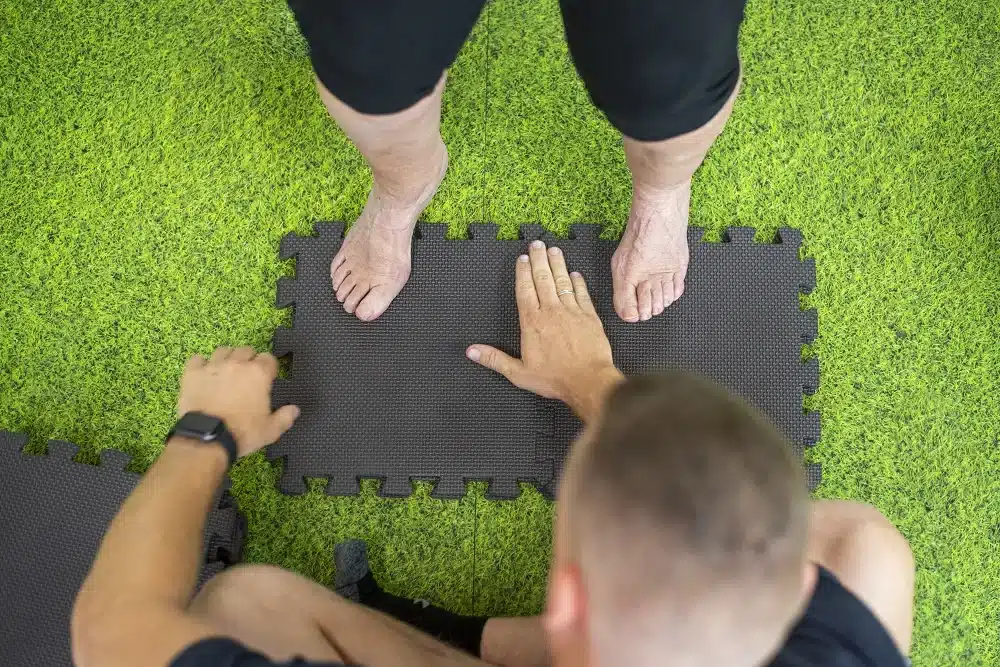After a stroke or brain injury , many people face the harsh reality that something as simple as taking a step has become a challenge.
The good news is that, with proper treatment and ongoing rehabilitation, walking again is possible. How is this achieved? At Rehabot , we’ll explain the process step by step.
Why do people lose the ability to walk after a stroke or brain injury?
Strokes and brain injuries can affect different parts of the brain responsible for movement. Depending on the severity of the damage, a person may experience :
- Weakness or paralysis on one side of the body.
- Coordination and balance problems.
- Loss of sensation in the legs.
- Spasticity , that is, stiff, tense muscles that make movement difficult.
The key to regaining mobility lies in neuroplasticity , the brain’s ability to reorganize and create new connections. With the right exercises and therapies, the brain can learn to move the body again.
How long does it take to walk again?
Every person is different. Some patients take their first steps within weeks, while others may take months or even years. Recovery depends on several factors, such as:
- The severity of brain damage .
- Age and previous physical condition .
- The speed with which rehabilitation begins .
- Consistency in exercises .
The most important thing is to start rehabilitation as soon as possible and maintain a positive attitude.
Stages of walking recovery
1. Initial evaluation and personalized objectives
The first step in rehabilitation is a medical and physical therapy evaluation. Specialists will analyze muscle strength, balance, and mobility. From there, a personalized treatment plan will be designed.
2. Exercises to regain strength and balance
Before walking, it’s important to strengthen weakened muscles. Some key exercises include:
- Joint mobility exercises : gently move your ankles, knees and hips.
- Strengthening exercises : seated leg raises, assisted squats, or using resistance bands.
- Balance exercises : standing on one leg with support, walking on an imaginary line, among others.
3. Gait retraining therapies
To walk again, different rehabilitation techniques are used, such as:
- Assisted walking with parallel bars : the patient practices walking with support.
- Use of assistive devices : canes, walkers, or exoskeletons can make taking your first steps easier.
- Weight-bearing treadmill therapy : allows the patient to walk with less load on the legs.
4. Complementary therapies
In addition to physical therapy, other therapies can help in recovery:
- Occupational therapy : to improve autonomy in daily activities.
- Functional electrical stimulation (FES) : to activate weakened muscles with electrical impulses.
- Robotic therapy : advanced devices that assist movement.
Can walking ability be fully recovered?
There’s no single answer. Some people manage to walk without assistance, while others may need constant support. The important thing is to make as much progress as possible and improve your quality of life.
Tips to speed up recovery
- Be consistent with your exercises : Rehabilitation is a long process, but every little bit of progress counts.
- Follow the recommendations of specialists : they know which techniques are best suited to your case.
- Maintain a positive attitude : Motivation and effort are key to recovery.
- Don’t compare yourself to others : every body and brain recovers at its own pace.
Walking again after a stroke or brain injury is challenging, but not impossible. With proper rehabilitation and a lot of perseverance, great progress can be made. If you or a loved one are going through this process, at RehabOT Málaga we are here to help you every step of the way. Are you ready to take the first step toward your recovery?
Leave us your data to start your treatment







